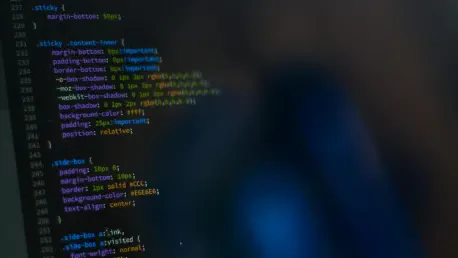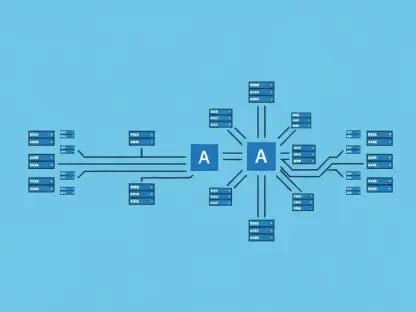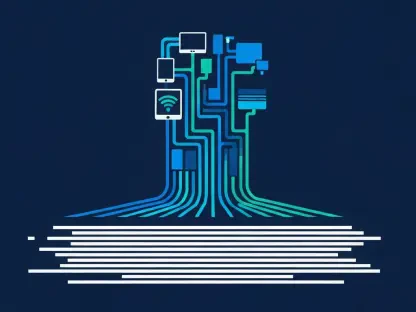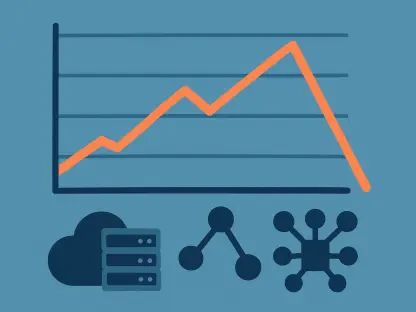In a world where efficiency and precision in software development have become imperative, Apple’s latest foray into AI-assisted code generation stands out as a transformative development. Through the introduction of DiffuCode, Apple sets a new benchmark in the realm of code creation, one that departs from traditional, linear methodologies. Historically, code generation has relied heavily on autoregressive models, a process akin to reading a book—predicting each token or word in a sequence. While effective for processing natural languages, this linear approach proves inadequate for the dynamic, multifaceted nature of coding. By embracing a diffusion-based model inspired by image generation techniques, Apple reshapes AI-driven coding into a more cohesive, non-linear process that aligns more closely with how developers operate.
Redefining Code Generation with Diffusion-Based Technology
The Innovative Approach of DiffuCode
Apple’s DiffuCode model reimagines how AI generates code by utilizing diffusion-based algorithms traditionally seen in image processing. This cutting-edge approach begins with forming a rough code structure, iteratively enhancing it to ensure overall coherence while attending to localized details. DiffuCode’s unique adaptability is powered by its capability to switch between rigid, linear prediction and a more dynamic, out-of-order creation of code tokens. Such flexibility is controlled by altering the temperature parameter, which allows the model to select the optimal strategy tailored to the given task. This nuanced scaffolding not only improves decision-making in code refinement but aligns AI generation more seamlessly with natural human coding processes.
Furthermore, the diffusion-based methodology transforms how AI-assisted tools engage with existing code infrastructures. Rather than merely generating lines from start to end, DiffuCode behaves akin to an experienced developer—surveying the whole before delving into parts, refining structure, identifying errors, and optimizing algorithms in parallel. The model’s ability to deliver coherent, structurally sound code potentially reduces the burden of reviewing and debugging, thereby streamlining the workflow of DevOps teams working with sprawling codebases. Such innovation enables the automation of complex coding tasks, providing developers relief from monotonous, time-consuming code editing.
Collaborative Foundation with Open-Source Contributions
Apple’s development of DiffuCode represents a strategic departure from building AI models from scratch, leveraging collaborations within the open-source community to shape its breakthroughs. Utilizing Alibaba’s Qwen2.5-7B as a cornerstone, Apple harnessed the robust framework of Qwen’s code-specific fine-tuning, incorporating diffusion-based practices as a superior layer of refinement. This synergistic approach demonstrates an efficient avenue for technological evolution without expending resources on redundant development processes. Additional instruction-following training, enriched with over 20,000 meticulously selected coding examples, allowed DiffuCode to surpass traditional standards, reflecting a 4.4% uptick in coding benchmarks.
This progressive collaboration not only expedites the refinement of AI models but sets an example for industry practices—highlighting that collaborative advancements may yield unparalleled innovations. By rooting its model in such a cooperative foundation, Apple exemplifies a refreshingly inclusive innovation strategy. Purposefully blending pre-existing frameworks with emergent technology, DiffuCode showcases a sustainable model of AI development and positions Apple as a leader in inclusive, forward-thinking tech processes.
Comparisons and Strategic Implications
Limitations and Competitive Landscape
Despite DiffuCode’s groundbreaking capabilities, comparisons with industry giants such as GPT-4 or Google’s Gemini reveal certain limitations. Given its 7-billion parameter scale—a relatively efficient size—DiffuCode lacks the sheer brute force and expansive training data that larger models utilize. This scale constraint naturally caps its capabilities, affecting its performance against the more extensive architectures that boast hundreds of billions of parameters. Researchers have occasionally noted remnants of sequential processing within DiffuCode’s operations, suggesting that achieving a complete non-linear transformation in code generation may require both strategic architectural advancements and expanded model sizes.
Nonetheless, DiffuCode capitalizes on maintaining a balance between flexibility and efficiency, standing out through its unique non-linear creation methods. This positioning allows Apple to explore broader applications of its diffusion techniques within text generation and other structured content tasks. Even as larger models may presently hold numerical superiority, DiffuCode’s specific innovations manifest a distinctive paradigm shift, promising diverse potential across AI applications, embodying a strategic lead in the exploration of novel technological frontiers.
Long-term Vision and Industry Ripple Effect
With its methodical emphasis on diffusion-based algorithms, Apple’s DiffuCode embodies a keystone in its broader AI strategy—leaning into unique, fresh perspectives over incremental enhancements. This aligns with Apple’s historical prioritization of groundbreaking, elegant solutions over immediate market trends. By thoughtfully nurturing core AI capabilities, Apple is setting the stage for future advancements in developer tools and software environments, potentially influencing and elevating the quality of engineering systems.
For the broader tech industry, DiffuCode signifies a promising proof of concept that encourages more experimentation with diffusion methodologies in AI. As diffusion techniques prove adaptable to structured text generation, they prompt renewed exploration into non-autoregressive strategies for various coded content applications. Adoption of DiffuCode within the open-source spectrum notably accelerates innovation, fostering a collaborative ecosystem that may yield practical, sophisticated AI coding aids celebrated for their holistic, parallel refinement features.
Looking to the Future of AI Coding
Apple’s DiffuCode model presents a novel approach to AI-driven code generation by leveraging diffusion-based algorithms commonly employed in image processing. This advanced methodology initiates with constructing a preliminary code framework, gradually refining it to maintain both coherence and attention to detail. DiffuCode’s innovative adaptability stems from its ability to transition between structured, linear prediction and a more flexible, non-sequential creation of code elements. By adjusting the temperature parameter, the model selects the most suitable strategy for any task, enhancing its decision-making capabilities in code refinement and bringing AI-generated code closer to human coding methods.
Moreover, this diffusion-based approach revolutionizes how AI tools interact with existing code infrastructures. Unlike generating lines sequentially, DiffuCode mimics a seasoned developer—reviewing the entire codebase before focusing on details, refining the structure, detecting errors, and optimizing algorithms simultaneously. This ability to produce coherent and structured code can significantly reduce review and debugging workload, making it easier for DevOps teams to manage large codebases and automate complex coding tasks, freeing developers from tedious code editing.









